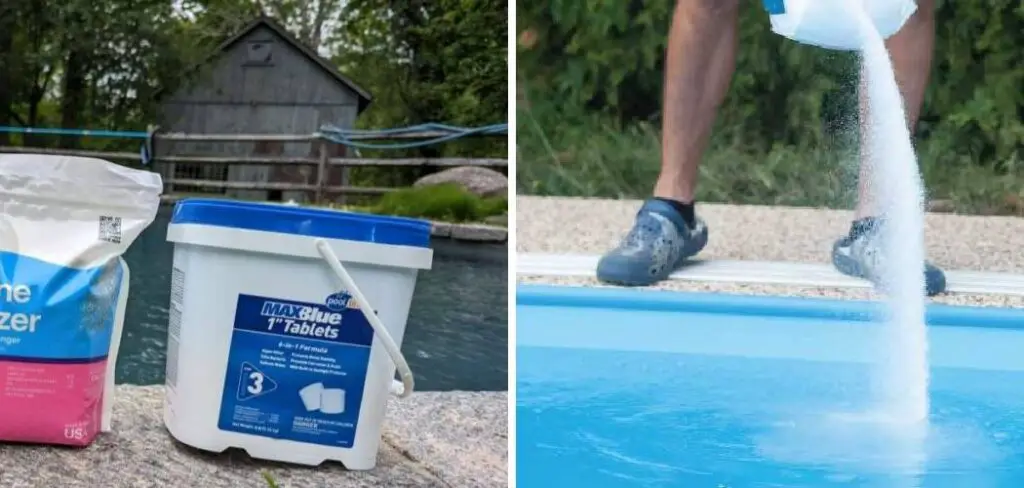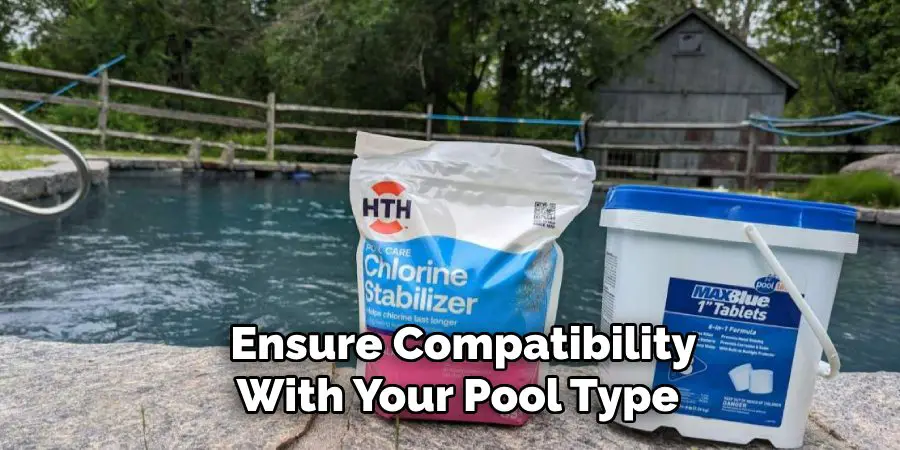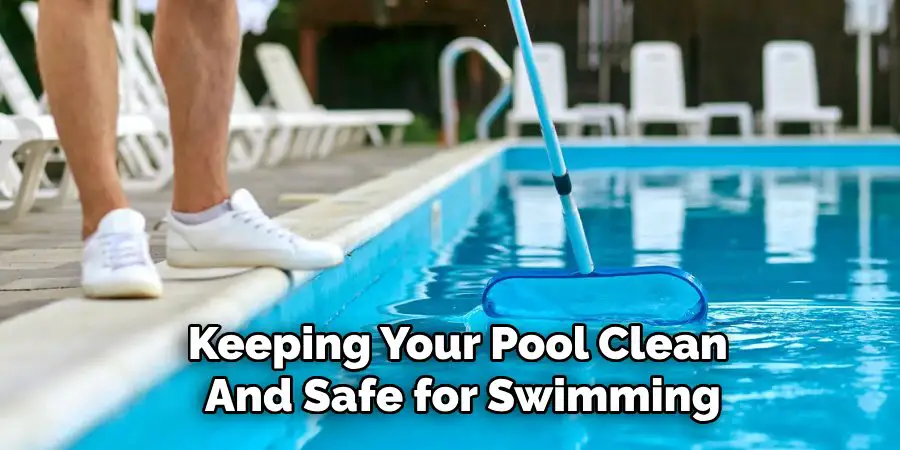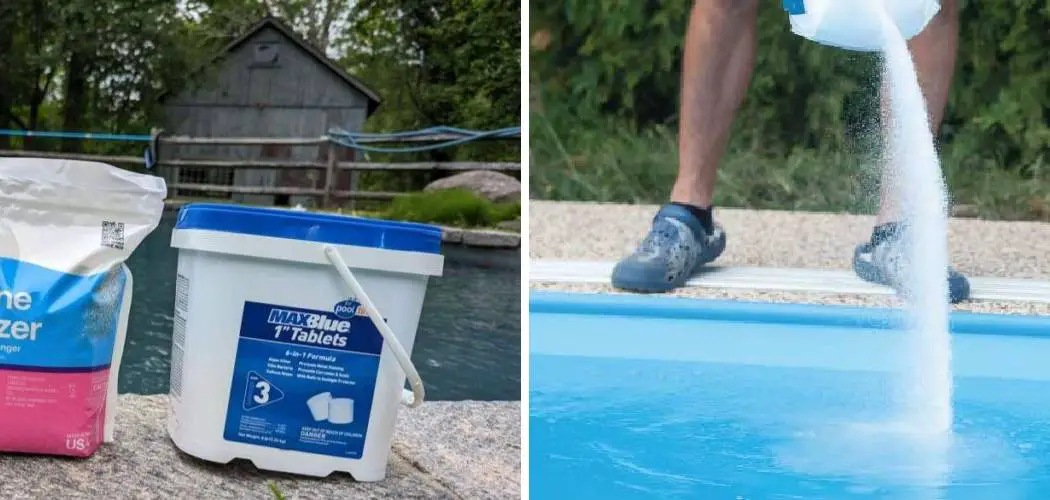Cyanuric acid, commonly referred to as CYA or pool stabilizer, is an essential chemical for maintaining balanced pool water. It helps protect chlorine from being degraded by sunlight, ensuring that your pool stays clean and safe for swimmers.
If you’re managing a pool, understanding how to properly add CYA can save you time and effort while keeping your water in optimal condition. This guide on how to add cya to pool will walk you through the steps to effectively add cyanuric acid to your pool.

Ideal CYA Levels for Pools
Maintaining the correct cyanuric acid levels in your pool is crucial for ensuring its effectiveness and preventing potential issues. Ideally, CYA levels should fall between 30 and 50 parts per million (ppm) for most outdoor pools. For pools exposed to intense sunlight or used in hotter climates, a slightly higher level of up to 70 ppm may be appropriate.
However, exceeding 100 ppm can lead to reduced chlorine efficiency, resulting in water that’s harder to balance and potentially unsafe for swimming. Regular testing with a reliable CYA testing kit is essential to keep levels within the recommended range and ensure your pool remains clean, clear, and safe.
Testing CYA Levels
Regular testing of CYA (cyanuric acid) levels is vital to maintaining a balanced and safe pool environment. To begin, use a high-quality CYA testing kit, either in liquid or strip form, which provides accurate and consistent results. Start by collecting a water sample from elbow depth to ensure you’re measuring the water that’s most reflective of your pool’s overall chemistry.
Follow the testing kit’s instructions closely, as some require mixing a reagent with the sample to create a measurable reaction. Once the test is complete, compare the results to the recommended CYA range for your pool type and conditions. If adjustments are required, add or dilute CYA carefully, as changes can take time to stabilize. Testing at least once a month, or more frequently during periods of heavy use or extreme weather, can help you maintain optimal levels and proactively address any imbalances.
Types of CYA (Stabilizer) Available
Cyanuric Acid (CYA) is available in multiple forms to suit different pool care needs and preferences. The most common type is granular CYA, which dissolves relatively slowly and is usually added directly to the pool or through a skimmer. It is a cost-effective option but requires careful handling to ensure even distribution.
Another option is a liquid stabilizer, which dissolves instantly and allows for faster adjustments, making it convenient for those needing immediate results. CYA may also be included in stabilized chlorine products, such as trichlor tablets or dichlor granules, which simultaneously sanitize and stabilize the water. Choosing the right type depends on your pool setup, maintenance routine, and the desired speed of stabilization.

6 Simple Step-by-Step Guidelines on How to Add Cya to Pool
Step 1: Determine the Initial CYA Level
Before adding CYA to your pool, it is crucial to check the current CYA (Cyanuric Acid) level to avoid over-stabilization. Use a reliable test kit or test strips specifically designed to measure CYA levels in pool water.
The recommended range for CYA in most pools is typically 30-50 ppm (parts per million), though saltwater pools may require slightly higher levels. Record the results, as they will help you calculate the exact amount of CYA needed to achieve the desired level.
Step 2: Calculate How Much CYA is Needed
Once you have determined the current CYA level, you can calculate how much additional Cyanuric Acid is required to bring it to the recommended range. First, identify your pool’s volume in gallons, as this will determine the appropriate dosage.
Most pool chemical products include dosing charts or guidelines on the packaging to help with these calculations. For instance, adding approximately 13 ounces of CYA to 10,000 gallons of water typically increases the CYA level by 10 ppm. Use this information alongside your test results to determine the exact amount needed. It is always best to add in small increments and retest the water after each adjustment to prevent over-stabilization.
Step 3: Choose Your Preferred Method and Product
Once you’ve determined the proper amount of stabilizer needed, the next step is selecting the method and product to add it effectively. Pool stabilizers are commonly available in granular or liquid forms, each with its own advantages. Granular stabilizers are cost-effective and widely used but may require dissolving in a bucket of water prior to adding to the pool to prevent clumping or damage to pool surfaces.
Liquid stabilizers, on the other hand, are quick and convenient, making them an excellent choice for those who want a faster application process. Carefully read the product’s label to ensure compatibility with your pool type and follow the manufacturer’s instructions for the best results.

Step 4: Calculate the Amount of Product Needed
Accurate dosing is essential to ensure your pool stabilizer works effectively without causing imbalances in your water chemistry. Start by determining the current cyanuric acid (CYA) level in your pool using a reliable test kit. Then, check the product label or manufacturer’s guidelines to find the recommended dosage based on your pool’s volume and the desired CYA level.
For example, if your pool holds 10,000 gallons and you need to raise the CYA level by 20 ppm, adjust the amount of stabilizer accordingly. Always measure the product carefully and avoid over-application, as excessive stabilizer can lead to diminished chlorine effectiveness.
Step 5: Determine How and When to Add CYA
There are two recommended methods for adding CYA to a pool: through the skimmer or by diluting it in a bucket of water and pouring it around the edges of the pool. Whichever method you choose, make sure to follow proper safety precautions and wear protective gear.
It is also important to add CYA when there is no rain forecasted for at least 24 hours. Rain can dilute the CYA levels in your pool, making it less effective.
The best time to add CYA is in the evening when the sun is not hitting the pool directly. This will give the stabilizer enough time to fully dissolve and distribute evenly throughout the water before any direct sunlight hits.
Step 6: Test and Maintain Proper Levels
After adding CYA, it is important to test and maintain proper levels regularly. The recommended range for CYA is between 30-50 ppm for indoor pools and 70-80 ppm for outdoor pools.
To test CYA levels, use a reliable test kit that includes a specific reagent for measuring this chemical. Follow the instructions carefully and record the results.
If your CYA levels are too low, add more stabilizer according to the manufacturer’s instructions. If they are too high, dilute the water by partially draining and refilling the pool. Remember to test CYA levels regularly and adjust as needed to ensure a safe and enjoyable swimming experience.
Following these steps on how to add cya to pool will help you maintain a healthy and balanced pool. In addition to CYA levels, it is also important to regularly monitor and adjust other chemical levels such as pH, chlorine, and alkalinity. These factors all play a crucial role in keeping your pool clean and safe for swimming.

Additional Tips for Maintaining Balanced Pool Water
In addition to monitoring and adjusting CYA levels, there are other important factors to consider when maintaining balanced pool water. Here are some additional tips:
- Test pH levels regularly (ideally at least twice a week) and adjust as needed using a pH increaser or decreaser.
- Maintain proper chlorine levels to prevent the growth of bacteria and algae. Chlorine levels should ideally be between 1-3 parts per million (ppm).
- Keep track of alkalinity levels and adjust as needed using an alkalinity increaser or decreaser. Ideal alkalinity levels are between 80-120 ppm.
- Shock your pool regularly, especially after heavy usage or rainfall, to kill any harmful bacteria and maintain chlorine levels.
- Consider using a pool cover when the pool is not in use to prevent debris from entering and reducing chlorine effectiveness.
Frequently Asked Questions
Q1: How Often Should I Test My Pool Water?
A: It is recommended to test your pool water at least once a week. However, after heavy usage or rainfall, it is recommended to test the water more frequently. It is important to maintain proper water balance and chlorine levels to ensure a safe and enjoyable swimming experience.
Q2: What Chemicals Do I Need to Add to My Pool?
A: The most commonly used chemicals for pool maintenance include chlorine, pH increaser or decreaser, alkalinity increaser or decreaser, and calcium hardness increaser. It is important to follow the instructions on the chemical labels carefully and avoid mixing different chemicals together.
Q3: How Do I Shock My Pool?
A: To shock your pool, you will need to use a granular shock product that contains a high concentration of chlorine. Follow the package instructions for the recommended amount based on your pool size. It is important to wait until evening when the sun is no longer shining on the pool, as sunlight can decrease the effectiveness of shock. Dilute the shock in a bucket of water and pour it directly into the pool while the filter system is running. Allow the shock to circulate for at least 8 hours before using your pool again.

Conclusion
Properly maintaining your pool through regular care and attention ensures a safe and enjoyable swimming environment for everyone. By understanding the importance of balancing chemicals, routinely cleaning, and using shock treatments when necessary, you can extend the life of your pool and keep the water crystal clear.
Always follow manufacturer guidelines and safety precautions to achieve the best results. A well-maintained pool not only enhances your outdoor space but also provides countless hours of relaxation and fun. Thanks for reading this article on how to add cya to pool.

